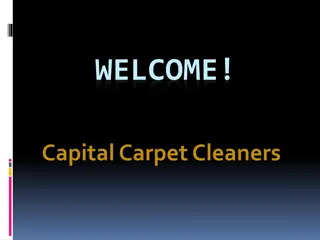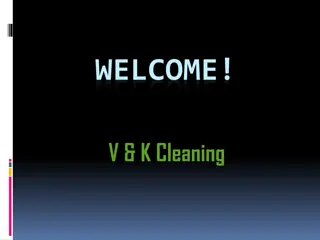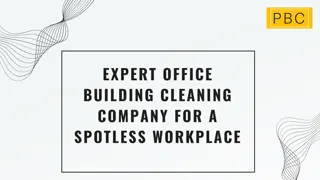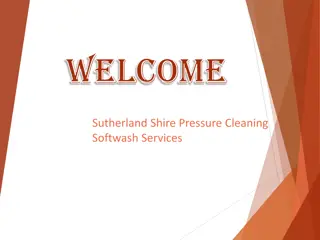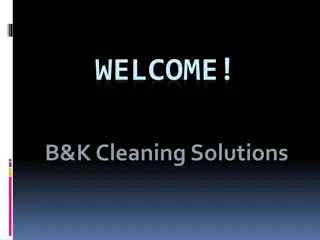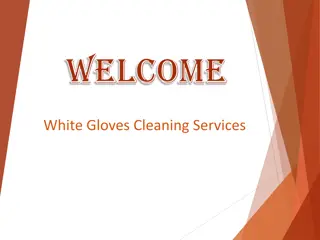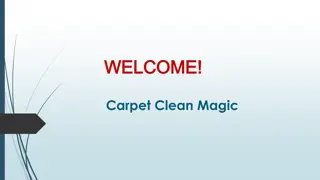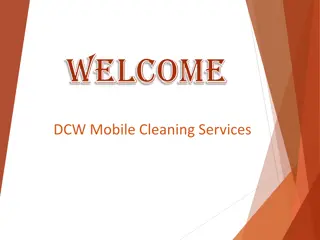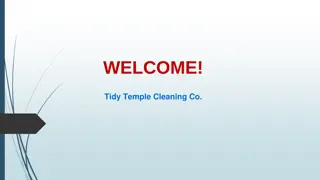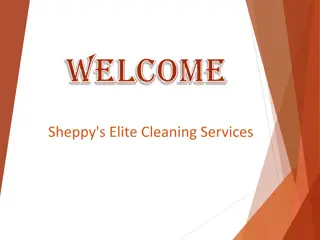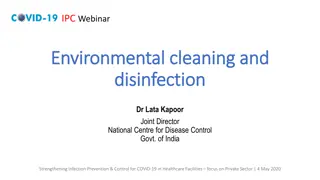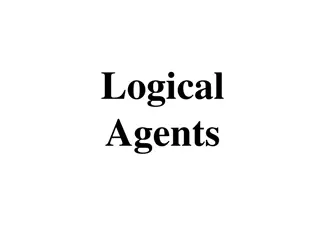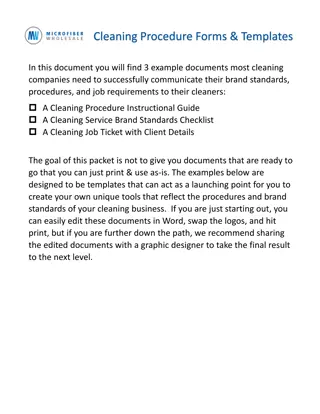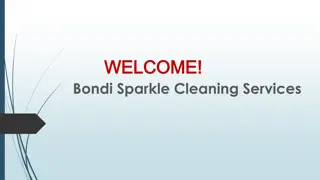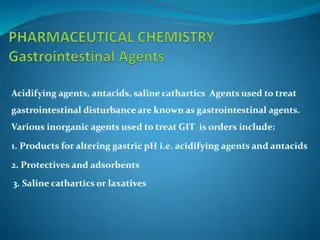Overview of Cleaning Agents and Disinfectants in Healthcare Settings
Cleaning and disinfection play a crucial role in maintaining hygiene and preventing infections in healthcare settings. Cleaning involves the removal of foreign material from surfaces, while disinfection kills microorganisms. Hospital-grade disinfectants like alcohols, chlorine, phenolics, and hydrogen peroxides are commonly used. It is essential to follow manufacturer instructions for effective cleaning. Various cleaning agents are available for specific purposes, and cleaning should be done promptly after use to prevent contamination.
Download Presentation

Please find below an Image/Link to download the presentation.
The content on the website is provided AS IS for your information and personal use only. It may not be sold, licensed, or shared on other websites without obtaining consent from the author.If you encounter any issues during the download, it is possible that the publisher has removed the file from their server.
You are allowed to download the files provided on this website for personal or commercial use, subject to the condition that they are used lawfully. All files are the property of their respective owners.
The content on the website is provided AS IS for your information and personal use only. It may not be sold, licensed, or shared on other websites without obtaining consent from the author.
E N D
Presentation Transcript
HOUSE KEEPING -4 Dr Versha Prasad
CLEANING AGENTS AND DISINFECTANTS Cleaning is the removal of foreign material (e.g., dust, soil, organic material such as blood, secretions, excretions and microorganisms) from a surface or object. Cleaning physically removes rather than kills microorganisms, reducing the organism load on a surface. It is accomplished with water, detergents and mechanical action. The key to cleaning is the use of friction to remove microorganisms and debris. Thorough cleaning is required for any equipment/device to be disinfected, as organic material may inactivate a disinfectant. This may be accomplished through a two-step process involving a cleaner followed by a disinfectant, but is more commonly accomplished in the health care organisation through a one-step process using a combined cleaner/disinfector product.
CLEANING AGENTS AND DISINFECTANTS Disinfection is a process used on inanimate objects and surfaces to kill microorganisms. Disinfection will kill most disease-causing microorganisms but may not kill all bacterial spores. Only sterilization will kill all forms of microbial life.
Detergents remove organic material and suspend grease or oil. Equipment and surfaces in the health care setting must be cleaned with approved hospital-grade cleaners and disinfectants. Equipment cleaning/disinfection should be done as soon as possible after items have been used. A variety of products from a number of suppliers can be used to achieve effective cleaning. It is important to follow the manufacturer s instructions when using cleaning agents.
HOSPITAL-GRADE DISINFECTANTS Hospital-grade disinfectants for use in all health care settings include: Alcohols o 60-90% ethyl or isopropyl alcohol Chlorine o Sodium hypochlorite ( bleach ) o Calcium hypochlorite Phenolics Quaternary Ammonium Compounds ( QUATs ) Iodophors Hydrogen Peroxides (1
ALCOHOLS (70-95%) External surfaces of some equipment (e.g., stethoscopes) Noncritical equipment used for home health care Disinfection is achieved after 10 minutes of contact. Observe fire code restrictions for storage of alcohol. Advantages Non-toxic Low cost Rapid action Non-staining No residue Effective on clean equipment/devices that can be immersed
CHLORINES (E.G., SODIUM HYPOCHLORITE OR BLEACH) Hydrotherapy tanks, exterior surfaces of dialysis equipment, cardiopulmonary training mannequin, environmental surfaces (use 0.1% for surfacecleaning and soaking of items) Noncritical equipment used for home health care Blood spills (use 0.05% sodium hypochlorite for a minor blood spill and 0.5% for a major blood spill) Advantages Low cost Rapid action Readily available in non hospital settings Sporicidal at higher Concentration
PHENOLICS Floors, walls and furnishings Hard surfaces and equipment that do not touch mucous membranes (e.g., IV poles, wheelchairs, beds, call bells) DO NOT use phenolics in nurseries Advantages Leaves residual film on environmental surfaces Commercially available with added detergents to provide one-step cleaning and disinfecting Slightly broader spectrum of activity
QUATERNARY AMMONIUM COMPOUNDS (QUATS) Floors, walls and furnishings Blood spills prior to disinfection Advantages Non-corrosive, nontoxic, low irritant Good cleaning ability, usually have detergent May be used on food surfaces
IODOPHORS (NON-ANTISEPTIC FORMULATIONS) Hydrotherapy tanks Thermometers Hard surfaces and equipment that do not touch mucous membranes (e.g., IVstands, wheelchairs, beds, call bells) DO NOT use antiseptic iodophors as hard surface disinfectants Advantages Rapid action Non-toxic
HYDROGEN PEROXIDE ENHANCED ACTION FORMULATION (HPEAF) 0.5% (7% SOLUTION DILUTED 1:16 Isolation room surfaces room surfaces Low-level disinfection is achieved after 5 minutes of contact at 20 C. Monitoring not required, however test kits are available from the manufacturer Advantages Safe for environment Non-toxic Rapid action Available in a wipe Active in the presence of organic material Excellent cleaning
GENERAL PRINCIPLES WHILE USING A HOSPITAL DISINFECTANT: It is most important that an item or surface be free from visible soil and other items that might interfere with the action of the disinfectant, such as adhesive products, before a disinfectant is applied, or the disinfectant will not work. A hospital-grade disinfectant may be used for equipment that only touches intact skin. It is important that the disinfectant be used according to the manufacturer s instructions for dilution and contact time.
GENERAL PRINCIPLES WHILE USING A HOSPITAL DISINFECTANT: Minimize the contamination levels of the disinfectant solution and equipment used for cleaning. This can be achieved by ensuring proper dilution of the disinfectant, frequently changing the disinfectant solution and by not dipping a soiled cloth into the disinfectant solution (i.e., no double-dipping ). Personal protective equipment must be worn appropriate to the product(s) used. There should be a quality monitoring system in place to ensure the efficacy of the disinfectant over time (e.g., frequent testing of product).



